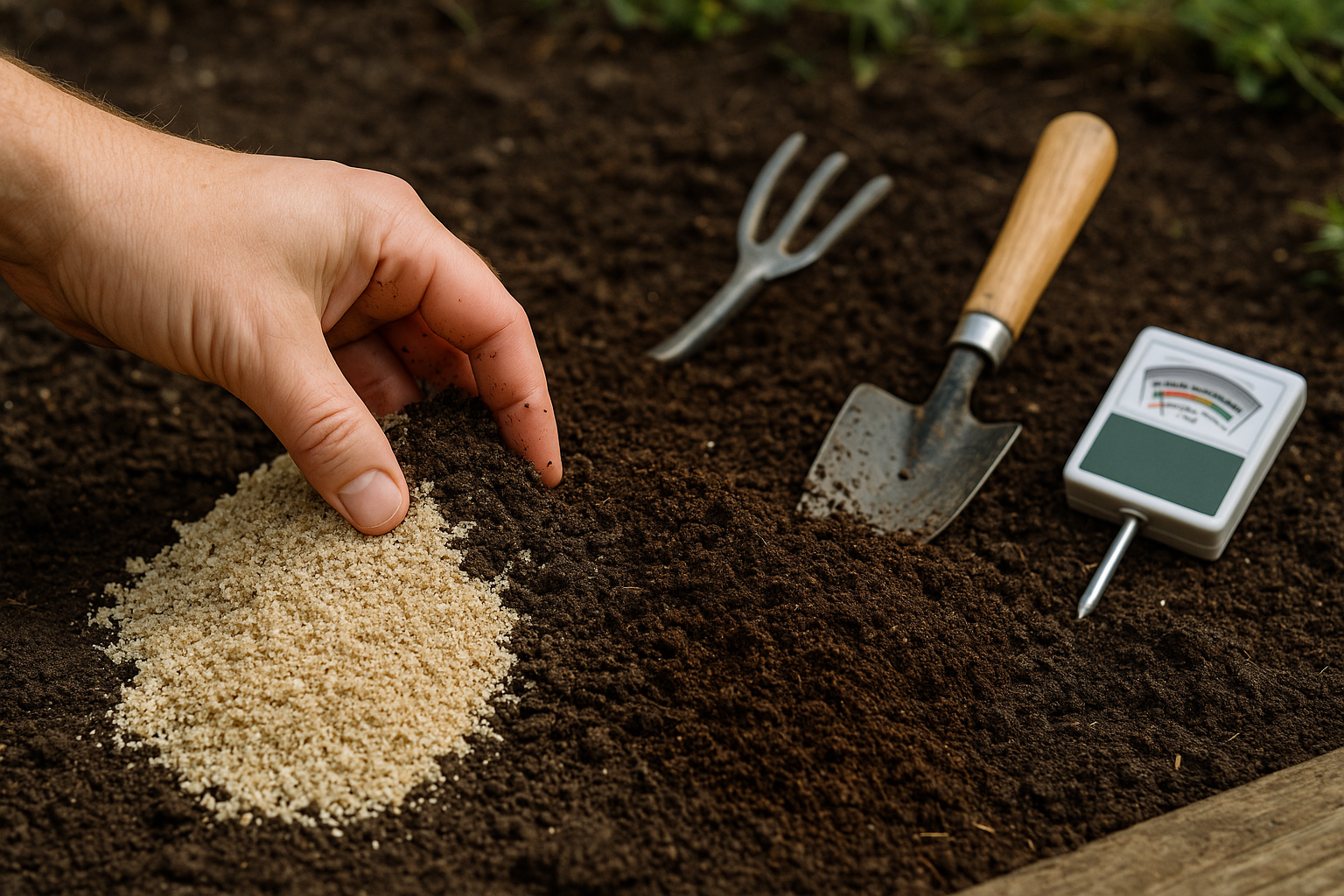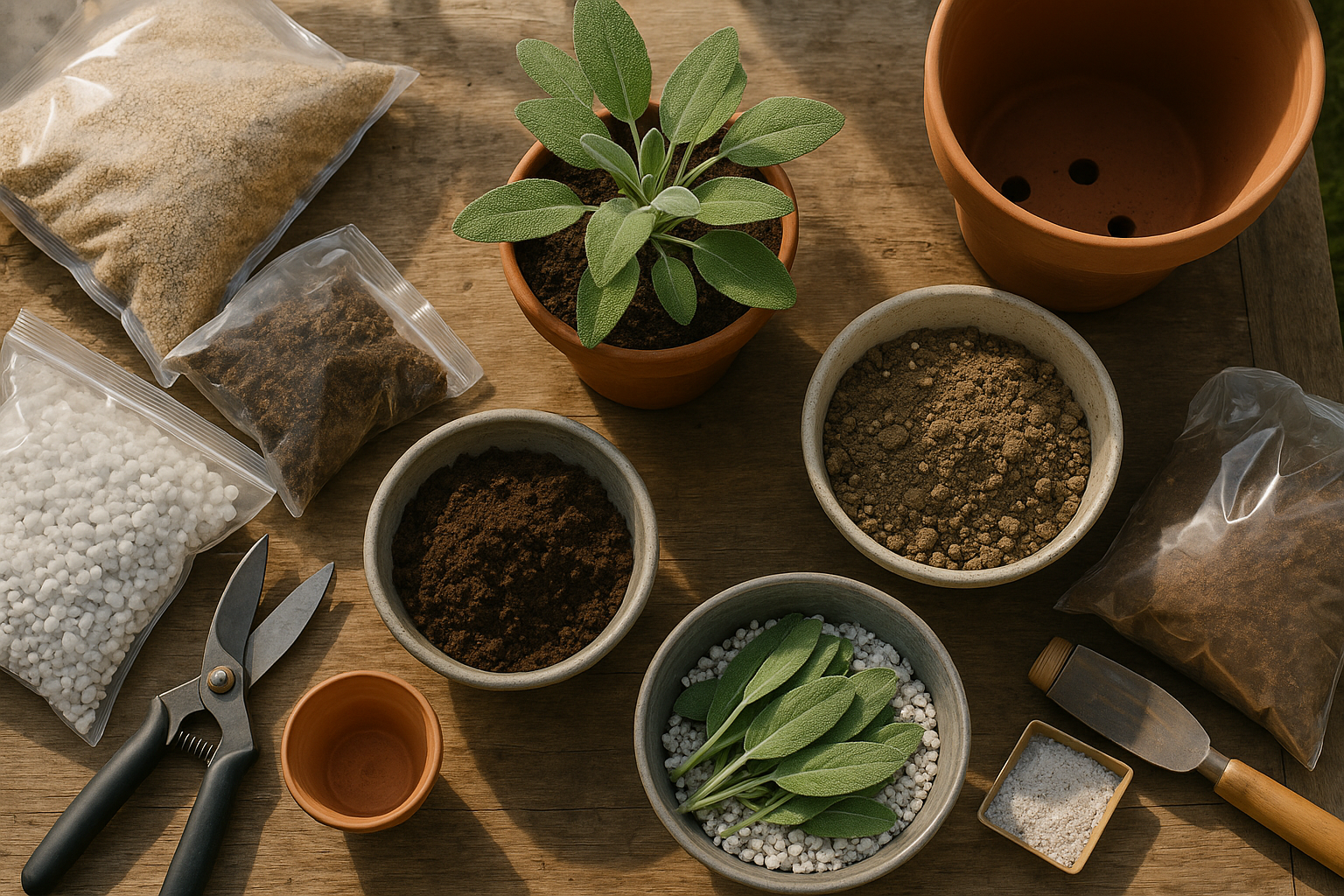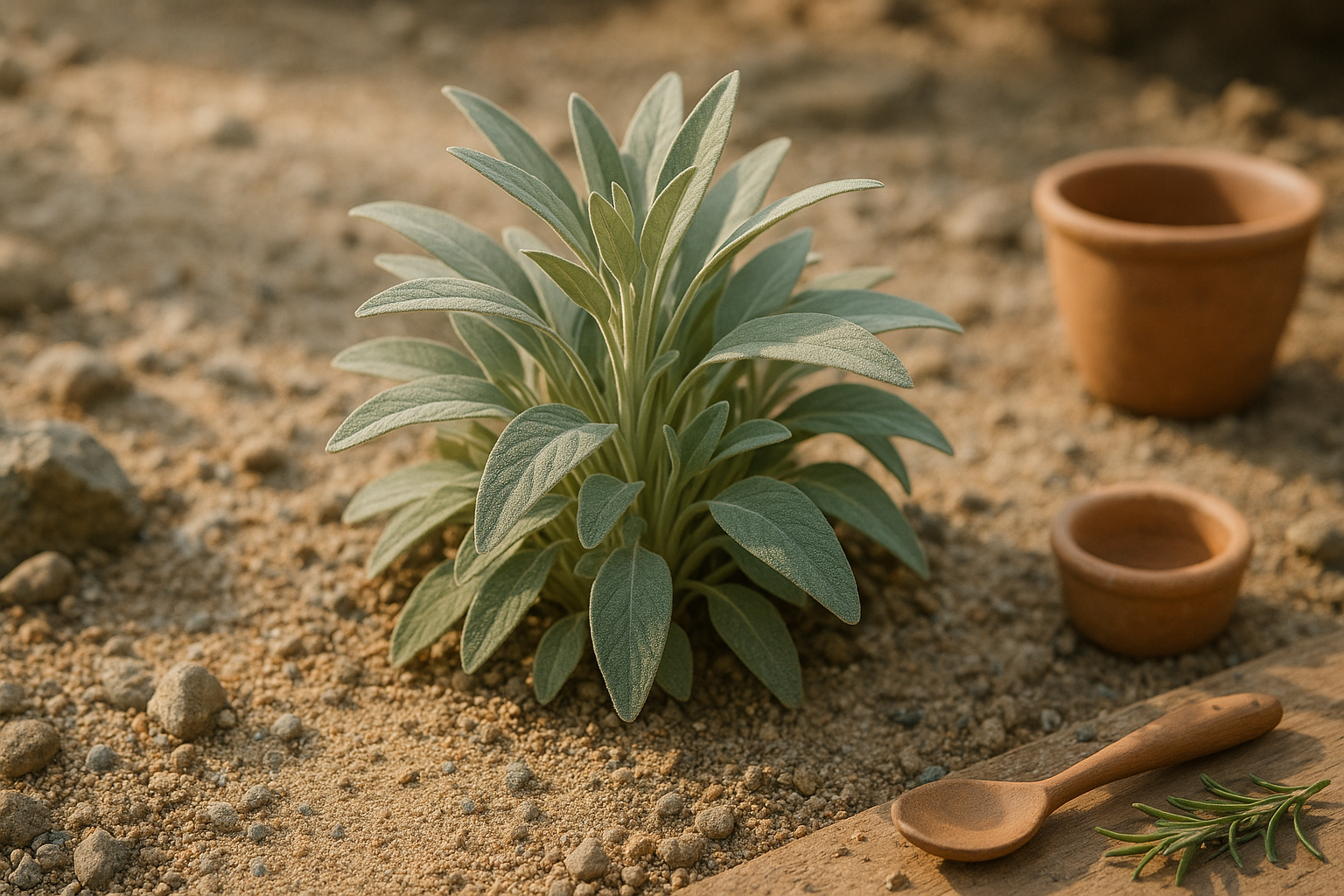Why Grow Sage? & What Makes the Right Soil Important

Sage is a versatile perennial herb celebrated for its bold, earthy flavor with hints of pine and citrus, making it a kitchen staple for seasoning poultry, sauces, and stuffings. Beyond cooking, sage is valued in gardens for its attractive silver-green leaves, resilience, and ability to attract pollinators like bees.
However, sage needs more than just sunlight to thrive—it depends heavily on the quality of its soil. Healthy sage requires well-draining, moderately rich soil that mimics the rocky Mediterranean terrain where it originates. Choosing the right soil isn’t just about growth; it directly affects the potency of sage’s flavors and the plant’s overall health.
Poor soil conditions can cause several problems. Overly wet or dense soils suffocate roots, potentially leading to root rot, while nutrient-poor soil results in spindly, weak sage plants, negatively impacting leaf production and taste. If planted in heavy clay or waterlogged areas, sage might not survive the season.
The good news is that a few strategic adjustments can make any garden bed more hospitable for sage. In this article, you’ll find straightforward recommendations to help you create the ideal soil mix, whether you’re planting sage in beds or containers, so you can enjoy fragrant, robust plants and a steady harvest of flavorful leaves.
Understanding Sage’s Soil Preferences
Sage thrives when its soil conditions echo its Mediterranean origins—think sun-drenched hillsides with rocky, well-drained ground and minimal rainfall. In these native habitats, the soil is rarely rich or heavy; instead, it’s loose, slightly gritty, and leans toward alkaline, with a pH of 6.5 to 7.5.
For successful sage cultivation in your garden, mimic these features: prioritize fast-draining soil, whether sandy or loamy, and avoid spots where water lingers after rain. Heavy clay soils are a major concern because they trap moisture around the roots, causing rot and fungal problems.
To improve drainage in garden beds, amend clay or dense soils with coarse sand or small gravel, or consider planting sage in raised beds and containers. Sage actually thrives when slightly neglected; too much organic matter or fertilizer leads to lush growth but weakens its signature flavor and aroma.
If you’re unsure about your soil, dig a small hole and fill it with water—if it drains within an hour, you’re on the right track. Remember, the goal isn’t rich, moist earth, but rather a dry, lean foundation that encourages deep root growth and robust, aromatic leaves.
By understanding what sage seeks from its soil, you’ll help this tough but particular herb thrive, rewarding you with healthy plants and vibrant flavor for your kitchen.
Best Soil Mix for Growing Sage (Garden Beds & Pots)

Creating the perfect soil mix for sage boosts its growth and flavor, whether you’re planting in garden beds or pots. Sage thrives in well-draining, loose soil with a neutral to slightly alkaline pH (6.5 to 7.5).
For raised beds or in-ground gardens, start by mixing equal parts garden soil, coarse sand, and high-quality compost. The sand improves drainage, while the compost provides a steady supply of nutrients. If your garden soil is heavy clay, add extra sand and a handful of perlite per square foot to enhance aeration even further.
For pots, use a commercial cactus or Mediterranean herb potting mix as a base since these are designed to drain quickly. Boost the mix with a scoop of perlite and a bit of compost for extra nutrients—about 2 parts potting mix to 1 part perlite and 1 part compost works well. Always choose containers with large drainage holes to avoid soggy roots, as sage detests “wet feet.”
Testing your soil pH is easy at home using a simple kit from the garden center, or try mixing a pinch of soil with a little vinegar—if it fizzes, your soil is alkaline. If the pH is too acidic, sprinkle in garden lime and retest after a week. In outdoor beds, raking in lime during soil prep can raise the pH; for containers, add a teaspoon of lime per gallon of soil.
Sage is forgiving, but a light, crumbly, and slightly alkaline mix is your best bet for healthy, aromatic plants.
Planting and Sowing Sage for Optimal Growth
To give sage the best start in your garden, focus on timing and techniques suited to its unique needs. For direct seeding, wait until all danger of frost has passed and soil temperatures are consistently above 60°F (16°C)—usually a couple of weeks after your region’s last expected frost. If you’re starting with transplants, harden them off by gradually exposing them to outdoor conditions for about a week before planting.
Sage thrives in well-draining soil amended with a bit of compost. When preparing planting holes, make them just big enough for the root ball—about as deep as the pot and a little wider. Avoid planting sage too deep; set transplants so the top of the root ball is level with the surrounding soil. For direct sowing, plant seeds only 1/8 inch deep and cover lightly with soil.
Proper spacing is critical: leave 18 to 24 inches between plants to encourage airflow, which helps prevent mildew and fungal diseases. After planting, water seedlings or transplants gently but thoroughly, keeping the soil consistently moist (not soggy) until new growth appears. Once sage is established, it tolerates dry conditions well, so limit watering to when the top inch of soil dries out.
To lock in moisture without overdoing it, apply a light layer of mulch, like fine gravel or shredded bark, around the plants—about 1 to 2 inches thick—and pull mulch back a couple of inches from the stems to prevent rot and ensure proper air circulation.
These careful planting strategies—correct timing, shallow planting, good spacing, and mulch management—will help your sage thrive from the start, giving you abundant, fragrant leaves for cooking and crafts all season long.
Caring for Sage
Ongoing soil care is key to a healthy sage plant, and it starts with the right approach to fertilization. Sage thrives in lean, well-drained soil, so go easy on the fertilizer—feeding once in early spring with a balanced, organic slow-release fertilizer is usually enough for the entire year. Too much nitrogen can soften the plant’s flavor and make it more prone to disease, so avoid high-nitrogen fertilizers or frequent applications.
Drainage is just as important; sage roots need oxygen and easily rot in waterlogged soil. Check that your garden bed or container drains well by monitoring how quickly water moves through after watering. If water pools for more than an hour, improve conditions by mixing in coarse sand, perlite, or fine gravel.
In containers or long-term plantings, refresh the top few inches of soil every spring. Remove the upper 2–3 inches and replace it with fresh, well-draining potting soil mixed with a bit of compost and sand.
Watch your sage for early signs of soil trouble: yellowing leaves, wilting despite moist soil, or a musty smell are all red flags for root rot or soggy conditions. If you notice these symptoms, ease up on watering and consider lifting and replanting in improved soil.
For outdoor plantings in heavy clay soil, create raised beds or plant on small mounds to boost drainage further. By sticking to light feeding, checking moisture with your finger before watering, and renewing soil as needed, you’ll keep your sage resilient and aromatic for many seasons to come.
Common Problems
Sage, while a resilient herb, isn’t immune to garden troubles—especially when it comes to pests, diseases, and soil challenges. Common pests like aphids, spider mites, and whiteflies are often attracted to stressed or weakened plants, particularly those struggling with poor soil drainage or compacted dirt.
Fungal diseases, including root rot and powdery mildew, tend to thrive in overly damp or poorly aerated soil, where water lingers on roots and leaves. If you notice your sage’s leaves turning yellow, wilting, or developing a powdery coating, it’s time to investigate—literally.
Compacted soil squeezes out crucial air pockets, stifling roots and creating the perfect environment for fungal outbreaks. Similarly, nutrient imbalances—too much nitrogen or not enough potassium—can weaken sage’s immune system, making it more vulnerable to sickness and sap-sucking insects.
To quickly address waterlogging, amend the soil by mixing in coarse sand or perlite to improve drainage. Consider raised beds or containers if your native soil is heavy clay. For compacted ground, gently till the top few inches and add organic matter like compost to boost airflow.
Regularly test your soil’s pH and nutrient levels, aiming for a pH between 6.0 and 7.0 for ideal growth. Practice crop rotation and avoid overhead watering to deter fungal pathogens. Always remove dead or diseased foliage promptly to prevent spread.
Mulching with straw or dried leaves can help buffer against sudden moisture swings, but keep mulch away from the base of your plants to avoid rot. Long-term, focus on building healthy, living soil with regular additions of organic matter, maintaining good drainage, and monitoring for early signs of trouble to keep your sage robust and ready for harvest.
